
Simple Strategies to Unravel Back Pain
Most of us have experienced back pain at some point. It’s one of the most common frustrations clients share at my fitness studio, MOVE Wellness. Back pain – like many things – is unique to your own body and should always be evaluated by your physician to rule out any more serious issues.
Quite often however, unraveling why it is happening is the key to resolving acute pain as well as ensuring it doesn’t recur. Movement can be part of the solution.
Genetic vs. Cultural Posture
We have unique and miraculous bodies. Back pain, once you have ruled out other issues, can be diminished once you understand your own body and the elements that play a role in causing the pain. But while you try to figure those elements out, it can also be frustratingly mysterious.
I have had to do this for myself, and the path was not a direct one. First, I had to work to understand why my back hurt. For me, it was because my pelvic bones had shifted and were pulling on my low back.
Then I had to figure out what I was doing to cause the pain. Over time I learned that I was putting additional torque on my pelvis by continuing to pull it in the direction it had already moved. I’m oversimplifying a bit but often, back pain is a perfect storm of forces influenced by a variety of factors.
Here are two factors that are particularly helpful to consider as you play detective with your unique situation.
Genetic Posture
I got it from my mama! Or dad, or grandma… you get the idea. Our genetic posture is formed in us from our parents. It is our basic body structure and includes any issues we might inherit. It can be things like leg length difference, scoliosis or long toes. It’s not good or bad. It is just the way we’re made and important to understand as part of the big picture of how the forces of movement transfer through our body.
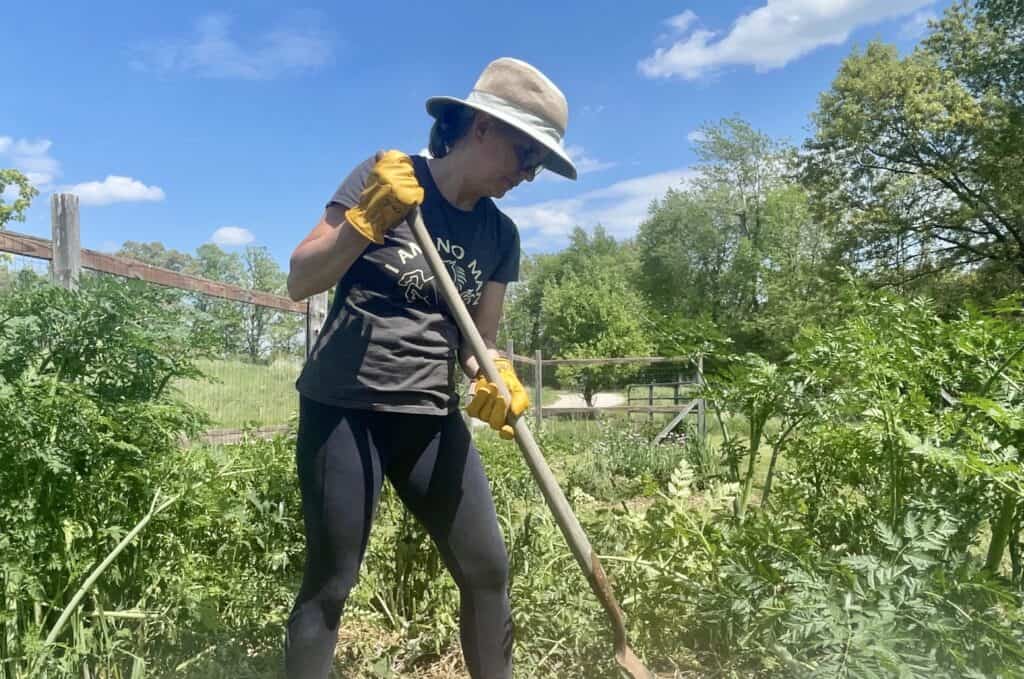
Cultural Posture
What do you do all day? Your lifestyle is your cultural posture and has two elements of its own. What you have to do, and what you love to do. These are the forces applied to your body (or lack thereof if you sit or stand still for long periods) based on what you’re doing with your time.
Do you sit at a desk? Are you on your feet all day? Maybe you love to go for a run after work. Or maybe you work a lot in your garden. However this shows up in your life, think about the impact of these activities on your spine and body.
Understanding the influences on your body can help you balance it out. The goal is to achieve balanced mobility through the whole body and keep all the tissues of the body stimulated and moving the best they can in your unique body. That will keep ease in movement and all of the systems healthy.
Everything Is Connected to Everything Else
Our amazing bodies are a collection of systems that have to work together. They are all important. Our musculoskeletal system is made up of bones and muscles and quite often we focus on this a lot. There is also an interconnected system made up of tissue called fascia that is interwoven in and around our muscles, organs and bones.
It’s so much more complicated than simply muscles moving bones. What you do (or don’t do) all day informs the communication of the system.
Back pain can sometimes be a symptom of the place in the system where the communication isn’t happening. Or a place that is strained because of tension coming from somewhere else in the body. When pain flares, our instincts can lead us to try stretching that one area or worse, to stop moving altogether.
But movement is typically a key part of the solution.
Depending on the cause of the pain, certain movements can help relieve back pain. In many cases, the right movement program can make pain a much less frequent concern. Taking time to notice the ways your systems interact with your posture can inform your choices and how to care for your body.
Restoring Balance in the Body
First and foremost, if you have pain, please seek support from a medical professional and only exercise with their clearance. I’m not a doctor and this is not medical advice. As a Pilates instructor and movement professional with 25 years of experience, I have some useful concepts and practical suggestions to share with you.
But they should always be pursued with permission from your own doctor. There is no one simple fix, but here are some basic movements to help you move more and feel better.
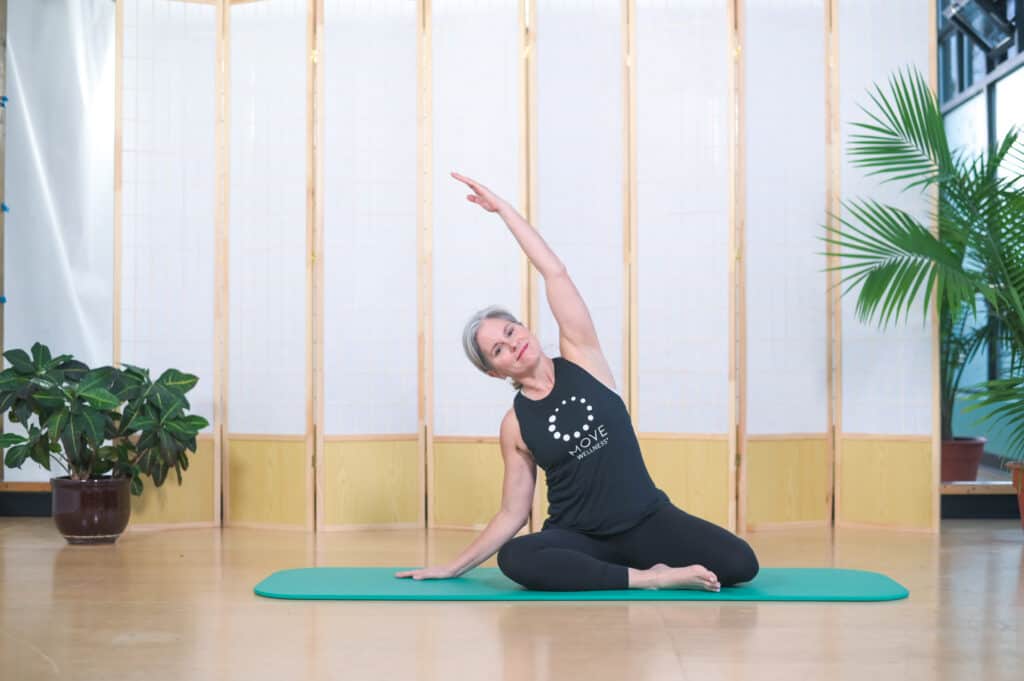
Move Your Spine in All Planes of Motion
Moving your spine in all of the planes of motion regularly at a pace that is comfortable for your unique body can be part of the solution. Usually this feels wonderful. Choosing exercises in all planes of motion help us maintain balance in our body. All planes of motion include exercises that bring your spine into length and:
- Extension – This looks and feels like arching your back, especially your upper back.
- Flexion – The opposite of extension – when your spine curves forward.
- Side Bend or Lateral Flexion – When you tilt your head toward your shoulder and bend your body sideways.
- Rotation or Spiral – Your shoulders and upper body turn one direction while your hips and lower body head the other way to create a gentle twist through your spine.
Practice Mindful Breathing
Breathing well can help a lot. By learning diaphragmatic breathing you can organically organize the musculature of your trunk (i.e., your core). As an added benefit, this mindful breathing practice can also release tension, calm the nervous system and help you feel energized.
Visit a Specialist
If you are moving your body and have areas of your spine that actively hurt, in addition to getting help moving your body in a balanced way, getting support from a manual therapist will help you understand and treat the symptoms of your pain.
Movement support and manual therapy go hand in hand. Ligaments can remodel (mine did) but you need the movement expertise to help strengthen your body. Support in both areas is key so if possible, find a trainer who understands back pain who can work with you in person or online.
Build Strength
Finally, do your exercises. I like to call them Movement Vitamins. If you have a home exercise program from a medical professional, doing it every day should be like brushing your teeth or taking your vitamins. This is the best way to build the stability and balance to your system to ensure that pain doesn’t recur. Here are a few favorites we like to share with clients at our studio.
Cat Stretch
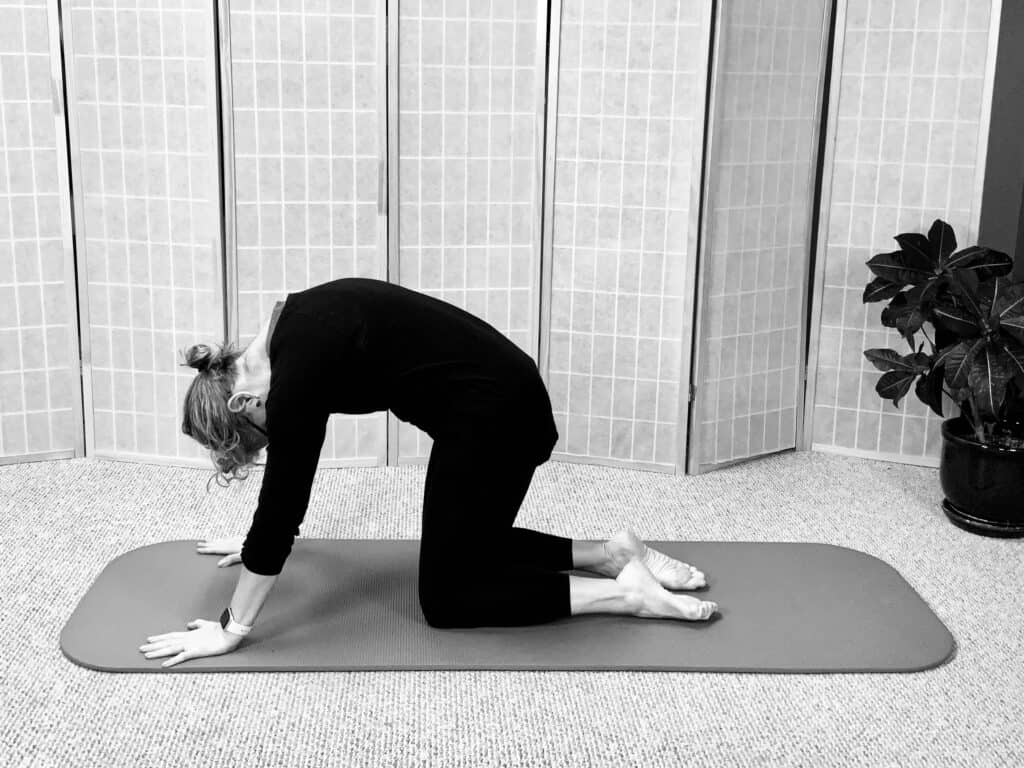
Begin kneeling on all fours. Your arms should be underneath your shoulders and knees directly underneath the hips, slightly apart. Feel your spine reaching long from tail to head. Inhale to grow longer and find length through the spine. As you exhale, use your abdominals to round your spine like a Halloween cat.
Start from your tailbone and leave the head for last. Hold this c-curve position while you inhale to breathe into the sides of your ribcage rounding further. Finish with an exhale and beginning with the tail end of the spine extend one vertebra at a time until you return to your starting position. Repeat 6-8 times.
Spinal Rotation
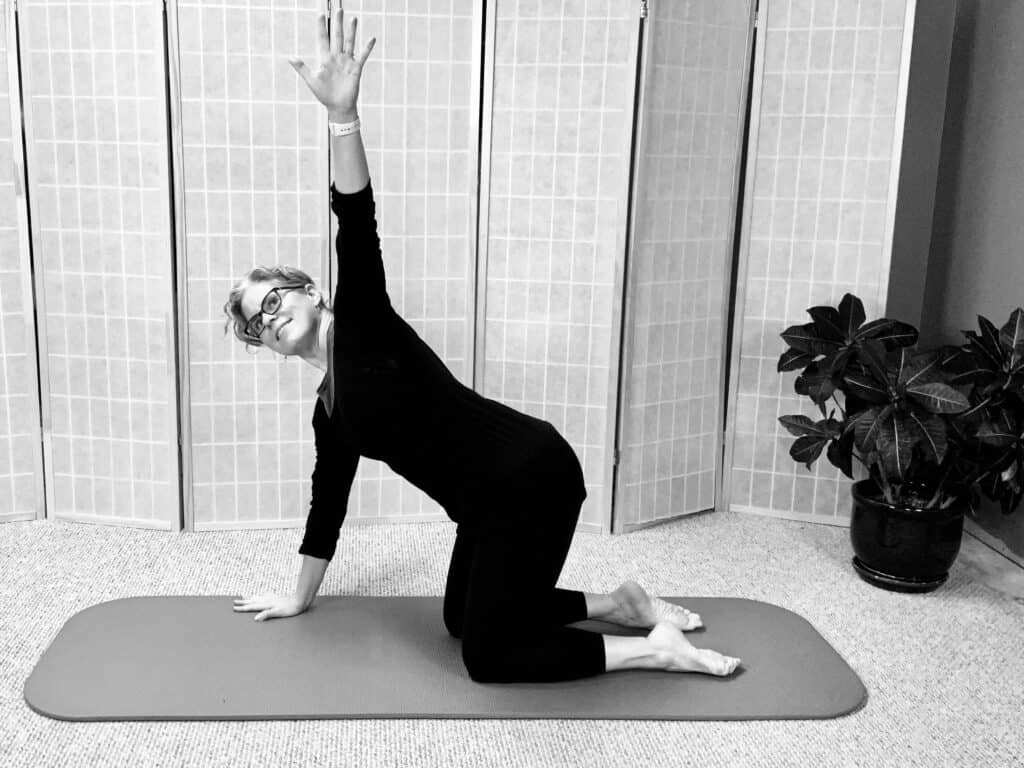
Begin kneeling with hands under shoulders and knees under hips. Your spine should be in a neutral position and feel as though it’s reaching long from tail to head. Your shoulder blades are stable against your rib cage.
Take an inhale and extend one arm out to the side. As you exhale, lead with your fingertips to thread your arm under your body. On your next inhale, return your arm out to the side. Exhale to open your chest and allow your spine to rotate as you then reach your arm to the ceiling. Inhale to return to your starting position and repeat with your other arm. Repeat 4 times on each side.
Hip Rolls
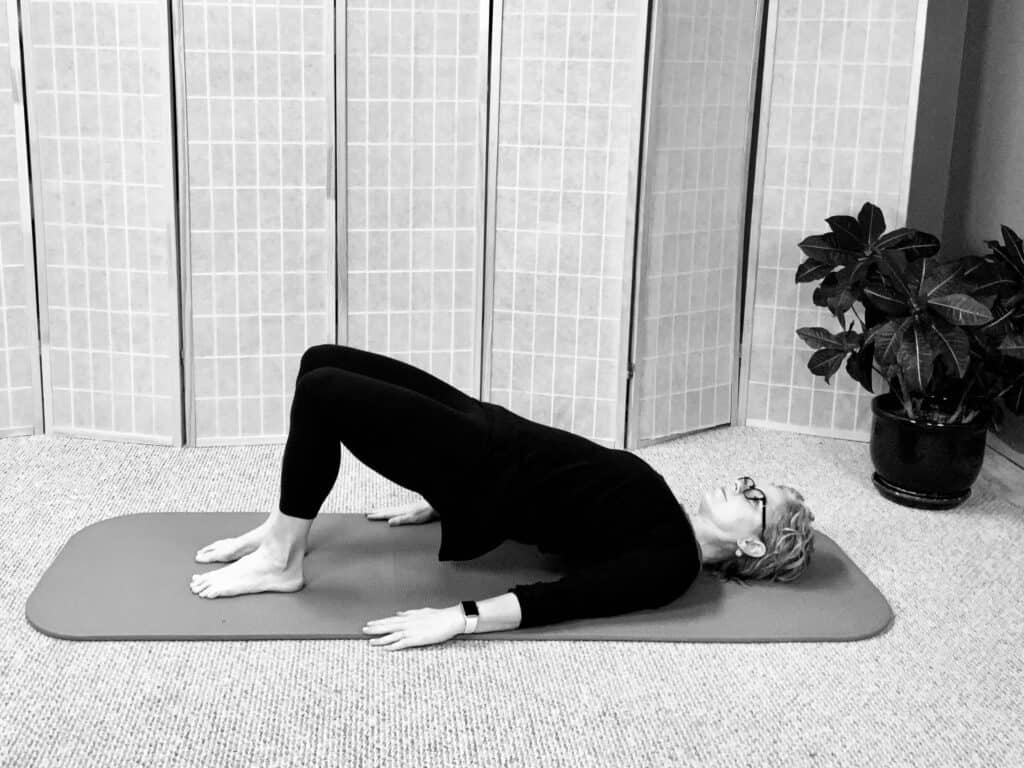
Start lying on your back with your knees bent and feet hip distance apart. Your arms are by your sides. Take a deep breath into the sides of your rib cage and feel yourself grow long through your spine. As you exhale, recruit your abdominals into an imprinted position by feeling your hip bones and ribs pull closer together and there is little or no gap between your spine and the floor.
Once imprinted, articulate your spine starting from the tail to roll up into a bridge position where wide shoulders support your weight. Your hip joints are extended, and your knees should feel they are energetically reaching long over your toes.
Take an inhale to stay here at the top, then roll down as you exhale to return to your starting position. Imagine your sit bones reaching toward your heels as you articulate down through your spine. Repeat 8 times.
Do More of What You Love
Unraveling back pain is like being a detective for yourself. The trick is to think about your unique genetic and cultural postures and bring balanced movement into the body all day long. There are so many systems working together to keep us moving and pain free. Noticing and understanding the systems will inform your choices and help you care for your body.
Moving your body in a conscious and enjoyable way is part of the process. Train for your unique life. Move your spine in all planes of motion. Breathe well. Bring movement to all the joints of the body and build up enough strength to do the things that you love.
You can start now. Enjoy a free trial of livestream classes with MOVE Wellness.
How often do you experience back pain? Do you know what causes it? Is it cultural or genetic posture that affects your spinal movement? What do you do to ease back pain?
Tags Fitness Over 60






